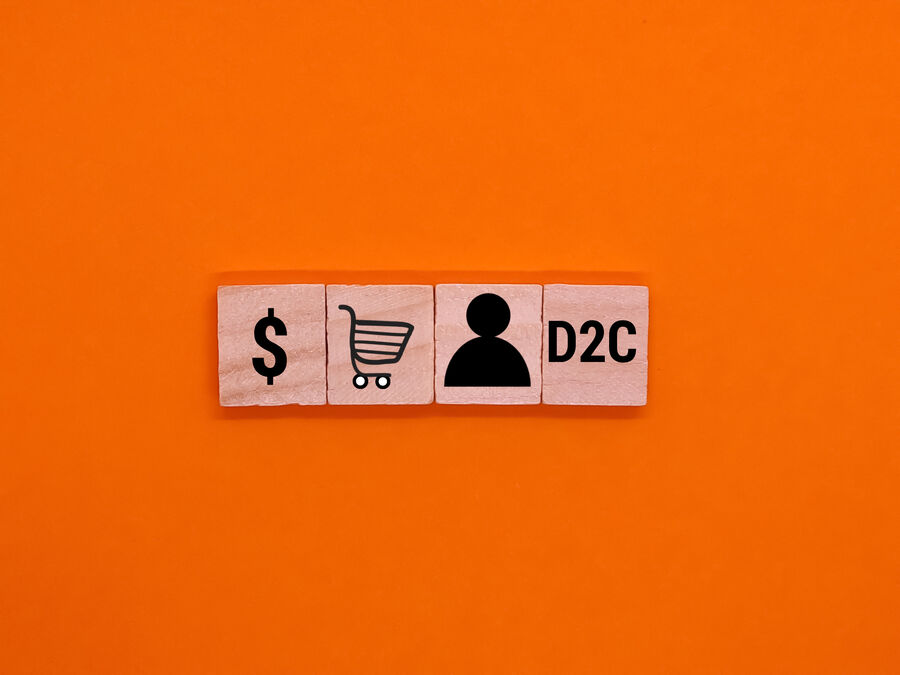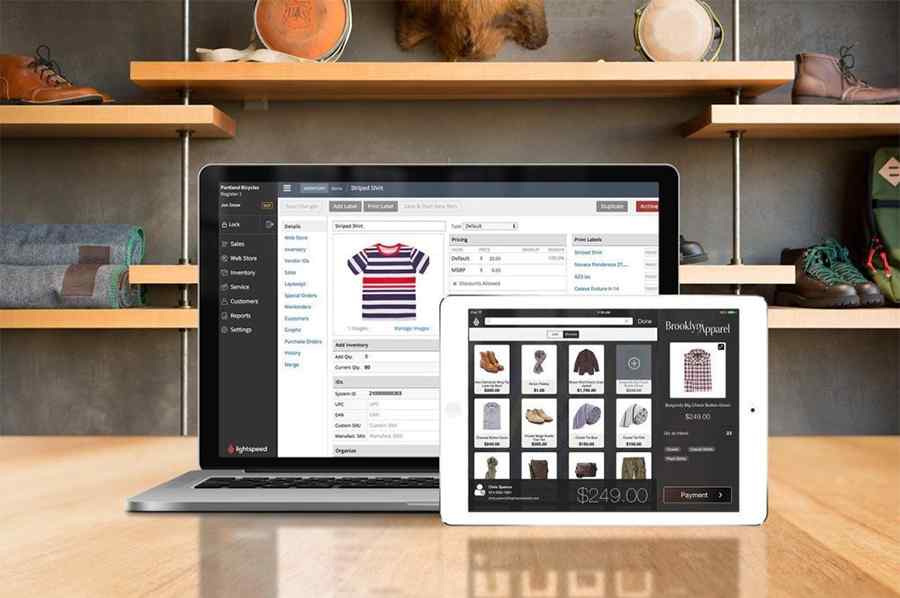
Direct-to-consumer (DTC or D2C) ecommerce involves businesses producing and selling products directly to their end consumers. DTC exploded on the scene with brands like Everlane, Dollar Shave Club, and Allbirds shaking up the traditional retail model—and while these are large brands, selling DTC is shaping up to be a trend small businesses can’t afford to ignore.
Below, check out eight DTC ecommerce trends to keep an eye on for 2024.
Key Takeaways:
- DTC brands might be struggling with rising costs and reduced consumer spend, but many are refocusing on profitability and wholesale expansion to counteract these challenges.
- Selling DTC gives brands more access to data, and they’re adopting technology to make even more data-driven decisions.
- Customer relationships remain a priority for DTC brands, as many look to nurture existing relationships and optimize the customer experience.
1. Expected Growth
Ecommerce statistics show that DTC is growing. More than 58% of supply chain professionals believe it will account for more than half of overall sales by 2026. For a quarter of businesses, DTC already makes up more than half of its income. And two-thirds of businesses have increased their investments in DTC fulfillment over the past three years.
2. Rising Advertising Costs
Advertising is a necessary evil—it’s expensive, but it’s a great way to get quick results. And it’s getting even costlier as time goes on. In fact, two-thirds of DTC brands reported increasing customer acquisition costs (CAC) as their biggest challenge in 2022—compared to just 54% of traditional retailers.
With the rise of advertising and acquisition costs, DTC brands need to be creative to gain customers profitably.
3. Focus on Profit
Businesses are almost always after a profit, but DTC brands are focusing on their margins more than ever. This is largely due to external factors like inflation, reduction in investors, and rising advertising costs. Inflation in particular is putting a hamper on consumer spend, as people buy less during economic uncertainty.
While more consumers are cutting back on dining out and vacations, many are also trimming retail expenses by switching to generic brands and canceling monthly subscriptions, which can impact DTC revenue. (Source: CNBC)
Where previously DTC brands were all about driving growth through awareness and market share, many are honing in on their profitability to ensure the business remains sustainable.
If you’re interested in getting on top of your business’ profitability, check out these resources:
- How to Price a Product (+ Profit Calculators)
- Retail Markup Calculator: How to Price Your Products
- Revenue vs Profit: Differences & When To Use Each
- What Is a Profit and Loss (P&L) Statement? [+ Types & Uses]
4. Increased Competition
There’s arguably more competition than ever before in the ecommerce space. On the one hand, this is great for pushing the industry forward. But on the other hand, this means DTC brands should stay aware of their competitors and sellers seeking new categories. It’s a great time to innovate!
DTC brands aren’t just competing against other new DTC brands. In fact, established brands are giving newcomers a run for their money, earning about three times more DTC sales. Flavored seltzer water, for example, is one niche that suffered from new category saturation after LaCroix went viral. Now, there is a whole slew of DTC flavored seltzer water brands.
However, both established and new DTC brands are growing sales year over year, indicating there is still plenty of opportunity in this market.
New DTC brands are lagging behind more established names in terms of sales, but DTC sales are growing overall. (Source: eMarketer)
5. Data Collection & Analysis Through Technology
Data is a double-edged sword. It represents both tons of opportunity but also comes with plenty of challenges. In fact, first-party data management is a top challenge for 65% of retailers. This could be why 61% of businesses say customer data platforms are their top technology investment priority.
Direct sales arm businesses with valuable data insights into consumer behavior, preferences, and purchasing patterns. This data can inform product development, marketing strategies, and personalized customer experiences. Nearly a third of businesses use DTC as a way to access more customer data that can inform retail business strategy.
The data goes beyond the customers, too. Warehouse management systems (WMS) are also increasingly popular among DTC brands, as they realize the value of real-time access to inventory information across all warehouse locations. In fact, 77% of businesses believe a WMS would drive higher DTC sales, and 69% believe it would increase profitability. Access to data is a great way to maintain business success.
6. Prioritizing Customer Relationships & Experience
Building authentic customer relationships has been a key area of focus for businesses in recent years.. Strong customer relationships are key to business success.
Nearly half of businesses prioritize DTC to build stronger customer relationships, and 44% do so to gain a better understanding of their shoppers. Yet only 14% of consumers believe brands always communicate honestly. That means there’s lots of potential for DTC brands to step up to the plate, get to know their customers, and anticipate their needs.
One example of a DTC brand enhancing the customer experience is Bonobos. It invites customers to its brick-and-mortar locations for in-person styling help, so customers can feel confident in making their purchase.
Highly personalized shopping experiences are a key retail trend for 2024.
7. Creative Fulfillment
DTC fulfillment is getting creative. With more options than ever before—same- and next-day delivery, click and collect, local delivery services, outsourced fulfillment, and more—DTC brands have a chance to use fulfillment as a way to enhance the customer experience. Here are some DTC fulfillment trends to think about:
Pop-up Shops
Temporary retail locations or local events allow customers to pick up their products. Pop-up shops offer the opportunity to engage with customers face-to-face and create buzz around the brand.
Click and Collect
Allowing customers to order products online and pick them up from a physical location, such as a store or designated pickup point. Click and collect—or buy online, pick up in store (BOPIS)—combines the convenience of online shopping with the immediacy of in-store pickup. DTC brand Glossier offers this option to its customers.
Buy online, pickup in-store is not a new trend, but it is an everlasting one as more and more consumers use this shopping method regularly. (Source: Glossier)
Local Delivery
By leveraging local delivery partnerships, DTC brands can offer same-day or even within-the-hour delivery options. This is a whole new level of convenience and instant gratification for shoppers.
8. Wholesale Expansion
Brands that only offer DTC sales online struggle more than those that give customers more buying options—44% reported lack of profit compared to just 20% of traditional retailers. This is a strong indication that offering sales via other channels is a good idea—and many are turning to expansion through wholesale.
There are tons of examples of DTC brands that have successfully expanded into wholesale and even their own retail operations. Warby Parker started online and now has store locations across the country. Casper also started online, and now customers can buy its mattresses at stores like Target and Rooms To Go.
Frequently Asked Questions (FAQs)
These are some of the most common questions we get about DTC ecommerce trends.
The DTC trend is a business model where brands sell their products directly to consumers without intermediaries such as retailers or wholesalers. This trend has gained traction in recent years, driven by advancements in ecommerce technology, changing consumer preferences, and the desire for more personalized shopping experiences.
Some DTC trends for 2024 are: market growth, rising advertising costs, increased focus on profit, growing competition, data collection and analysis through emerging tech, prioritizing customer relationships and experience, creative fulfillment methods, and expansion through wholesale.
The future of DTC ecommerce is expected to have continued growth, innovation, and evolution. As technology advances and consumer behaviors change, DTC brands will need to adapt to stay competitive in the market.
Key trends shaping the future of DTC include personalized shopping experiences, sustainability initiatives, omnichannel strategies, and advancements in data analytics and artificial intelligence.
DTC in ecommerce is a retail model in which a business designs, creates, and sells its products to the end consumer.
Bottom Line
Customer relationships are important regardless of how you sell your products. When it comes to DTC sales, it’s important to stay in the know of the latest trends. Keep an eye out for increased competition, CAC costs, and advertising expenses, and be ready to capitalize on opportunities around the customer experience, data management, and wholesale. DTC presents an excellent opportunity for small businesses, new and established, in 2024.





